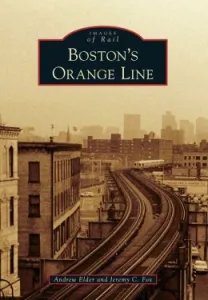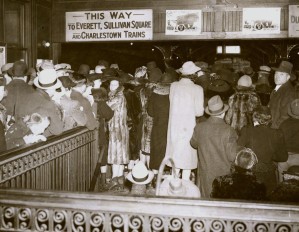Date and Time: Tuesday, April 15 | 6:30 – 8:00 p.m.
Location: West End Museum | 150 Staniford Street (Suite 7), Boston, MA 02114
Join us for a presentation, sponsored by the West End Museum, about the history of Boston’s Orange Line on Tuesday, April 15, 2014 at 6:30 p.m. at the West End Museum, 150 Staniford Street (Suite 7), Boston.
Since 1901, this rail line’s configuration has evolved in response to changes in the city, society, and technology. Hazardous sections have been eliminated, ownership has changed from private to public, and the line has been rerouted to serve growing suburbs and to use land cleared for the failed Inner Belt. Both its northern terminus, which shifted from Everett to Malden, and the southern route, realigned from Washington Street to the Southwest Corridor, have seen dramatic transformations that have in turn changed riders’ lives. Today, the line’s 10 miles of track curve through many Greater Boston communities, serving thousands along the way.
We will give an overview of the history of the Orange Line, but will focus on the Orange Line through Downtown Boston and its relation to Boston’s West End.
This event is sponsored by the West End Museum and is free and open to the public.
Signed copies of Boston’s Orange Line will be available for $21.99. Cash and credit cards are accepted.
Email bostonsorangeline@gmail.com with any questions.
Photo caption: A storm on February 14, 1940, dropped 14 inches of snow on Boston and stranded thousands, including a large number of couples celebrating Valentine’s Day. This image shows crowds at North Station, many having just attended a Sonja Henie ice show at the Boston Garden. By the end of the show, train service throughout New England was cancelled and wouldn’t resume until the next morning. (Courtesy of the Boston Globe.)
 The story of the Orange Line is the story of Boston: always in flux but trailed by its long history. Since 1901, this rail line’s configuration has evolved in response to changes in the city, society, and technology. Read more about the book here…
The story of the Orange Line is the story of Boston: always in flux but trailed by its long history. Since 1901, this rail line’s configuration has evolved in response to changes in the city, society, and technology. Read more about the book here…
If you’d like to schedule a talk, presentation, or signing at your organization, school, library, or historical society, please email us at bostonsorangeline@gmail.com.


